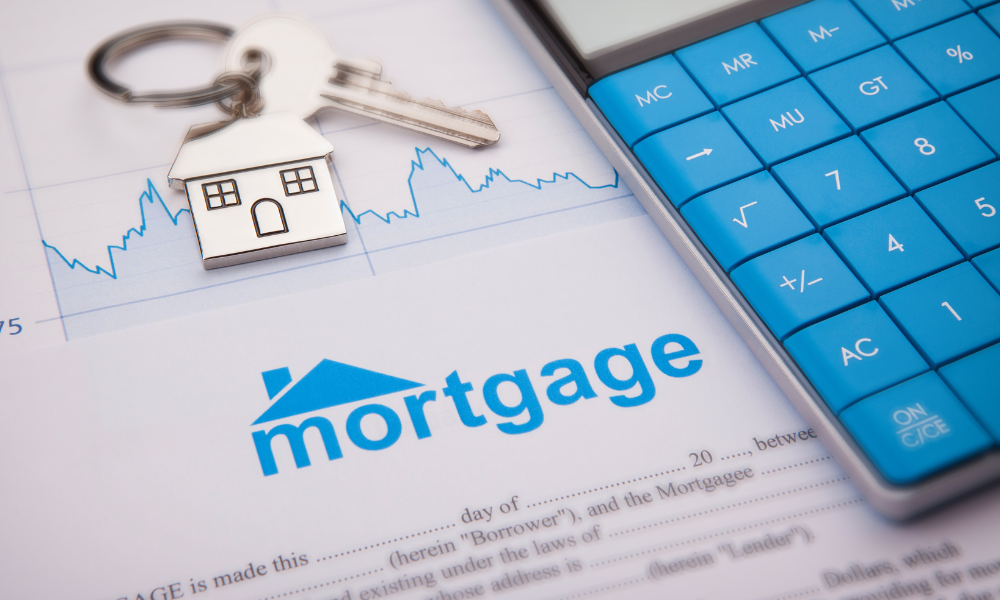A brief outline
If you’re buying a home and you take out a mortgage loan, you’ve entered the primary mortgage market. But did you know, there is a secondary market that can also come in to play? It’s important to understand this, so that you get to grips with the entire system. So, how does the secondary mortgage market work?
Main Points
Buying a home and applying for mortgage? You may want to know how the secondary market works because this can impact your loan too. Often, long-term mortgage loans that have affordable rates and loan terms became so desirable as a result of the secondary market.
What you’re seeing when you buy a property and get a loan is just one side to the system, but the secondary market provides another side which allows lenders to provide more loans by making their current mortgages more liquid and selling them off to investors.
Now you might be wondering, how does the secondary mortgage market work? Read on as we delve deeper into this topic.
What is the secondary mortgage market?
The secondary mortgage market is a large and global marketplace where mortgage loans are bought and sold by various entities, including financial institutions, banks and investors. Along with mortgage loans, servicing rights and mortgage-backed securities are also traded in this marketplace. Essentially, mortgage loans are converted into mortgage-backed securities in order to be bought and sold like shares to willing investors.
While many homeowners and homebuyers may not be aware of it, this market has a significant impact on mortgages. The secondary mortgage market plays a part in determining mortgage rates, how buyers get mortgages, and the requirements for these mortgages. Albeit one of the lesser-known sides of the real estate world, it’s an important element to know about.

How the secondary mortgage market works
There are 3 main participants in the secondary mortgage market, each with a key role to play:
- Mortgage originators: These are the original lenders for mortgages who work with borrowers.
- Mortgage aggregators: These are the middlemen who buy the loans from financial institutions and securitize them to become mortgage-backed securities and then sell them.
- Investors: These are people who buy the securitized mortgages to earn an income from the interest.
Here’s how the basic secondary mortgage market process works:
- A home buyer applies to a bank or lender for a mortgage and the loan origination will begin.
- The lender completes the loan origination and then sells the loan to the secondary mortgage market. However, the lender may retain the servicing rights to the loan. The reason lenders will sell this loan on the secondary mortgage market is to recoup any money they may have used when creating the loan.
- Many of these loans are then sold to government sponsored enterprises such as Fannie Mae or Freddie Mac. These enterprises or others will aggregate the loans, which means that they will convert them into mortgage-backed securities (MBS) or hold onto the loans themselves. This is done to earn interest from the borrowers on the loan. The loans are pooled together during this process.
- Investors will purchase mortgage-backed securities as shares through the secondary mortgage market, with the idea of getting good returns over time.
- Homeowners make their monthly mortgage repayments, and this goes through the secondary mortgage market system to land at the investor who bought the loan.
The secondary mortgage market explained
Lenders choose to enter the secondary mortgage market when they wish to sell a mortgage loan to recoup some of the costs that they have incurred by providing the loan and originating it.
Once the lender has sold the loan to the mortgage aggregators that are either government sponsored enterprises or other aggregators, the loans are made liquid for the market. Loans are then sold off as shares once they’ve been converted into mortgage-backed securities, to investors who are looking to make money from the attractive interest rates.
The secondary mortgage market is therefore a marketplace where mortgage loans can become liquid and then bought and sold like shares to investors who are looking to make good returns. This market would not exist without homeowners and it can impact homeowners and home buyers as well.

Who buys loans on the secondary market?
Investors are the people buying loans in the secondary mortgage market, and these are essentially the end users. There are several types of investors who are looking to buy a mortgage-backed security on the secondary market.
- Private entities such as pension funds, insurance companies and hedge funds would buy shares of loans from the secondary mortgage market.
- Foreign governments
- Government sponsored enterprises such as Fannie Mae and Freddie Mac (it’s worth noting that anyone who sells to these enterprises needs to make sure that they meet the specific criteria of the enterprise)
- Investment banks
Any of these entities will buy a loan on the secondary market in order to make money from the interest on the loan. The investors will buy shares of the pooled mortgage loans that are securitized, and then earn a steady income from the regular mortgage payments done by homeowners.
So, once an investor has bought the loan, they will be receiving the homeowner’s repayments instead of the original company that issued the loan. As much as homeowners may not realize it, this is the reason the secondary market impacts them.
Secondary mortgage market vs Primary mortgage market - What's the difference?
The primary mortgage market is where loans are offered to borrowers by lenders. People who are buying property are usually more familiar with the primary mortgage market as this is the part that they would see. A borrower would apply for a loan from a lender, and the lender would then originate the loan and pay it out to the borrower.
The secondary mortgage market only comes onto the scene once the borrower has been approved for a loan and the deal is closed. It’s at this juncture that the lender can choose to retain the loan in its portfolio or enter the secondary mortgage market.
Lenders would enter the secondary market to recoup the money they have lent out, so that they can take on more borrowers. The choice to enter the secondary market depends largely on the entity themselves, for example credit unions typically keep more of their mortgages than banks who sell more to the secondary mortgage market.
The establishment of the secondary market in 1938 was to increase the liquidity of mortgage loans and give lenders a way to offer lower interest rates and mitigate their risk.

Did the secondary market play a role in the subprime mortgage crisis?
The financial crisis that occurred in 2008 was largely related to issues in the real estate market. While the secondary market allows lenders to provide loans that they wouldn’t have been able to finance for the full duration, by securitizing them and selling them off, there are risks involved with this.
Mortgage-backed securities are heavily tied to the price of real estate, and as such, the collapse of the housing market meant that the secondary market’s short comings were exposed. The market provides loans to people at lower interest rates, and people who don’t qualify for standard loans, so the collapse led to banks, who had over-extended themselves using the market, to lose money and they were therefore forced to foreclose many homes as home values crashed.
This also impacted the investors who had purchase MBS products, and the unexpected crash caused a huge shift away from these. The Federal government then stepped in to invest in real estate to offset the crash and prevent interest rates from going sky-high.
During the crisis, financial institutions like Lehman Brothers and Bear Stearns who had heavily invested in MBS, were short-changed by the market collapse and couldn’t stay afloat. Which meant that Fannie Mae and Freddie Mac had to pick up the pieces and then became responsible for just shy of 90% of the home loans in the US as a result.
How does the secondary market affect individual investors?
Individual investors who buy mortgage-backed securities can enjoy the benefits of a steady income, thanks to the borrowers who are repaying their loan monthly. It’s a stable and reliable return that investors can see every month, for many years. This is entirely passive and once investors have invested money, they don’t need to do much more than that. This is an attractive security that not all investments can offer.
On the flip side however, in a financial crisis, investors are at the mercy of the market which, should it crash, can lead to major losses. The system hangs precariously in the balance of borrowers who can make their monthly repayments and lenders who can keep providing loans. In other words, when enough borrowers cannot make their monthly repayments, this can jeopardize investors as their investment returns begin to decline.
There are risks associated with the secondary mortgage market system, but when it’s working, it’s a great benefit to investors.

Secondary mortgage market pros and cons
For home buyers and lenders, there are various benefits, along with some risks that come with the secondary market.
PROS
- Rates are lower and more consistent for borrowers.
- Lenders can fund more loans thanks to the mortgage financing they get from the secondary market.
- There’s more liquidity in the system which frees up funds in the system for more borrowers.
- Borrowers can refinance their home or pay off the loan without facing penalties.
CONS
- Borrowers may not qualify for these loans if their credit score is too low, depending on the criteria of the secondary market.
- Borrowers who default on their loans will face foreclosure and this will have a knock-on impact on lenders and investors.
- Lenders need to pay attention to the economy and market overall, as a financial crisis can spell the end for their loans in the secondary market.
The bottom line
The secondary mortgage market has pros and cons for everyone involved, however simply understanding how the market works is a valuable tool for those who are taking out a loan to purchase a house. The system of borrowers, lenders, buyers and investors has helped to make the real estate market more liquid and provide a successful investment opportunity for investors. While there are risks associated with it, the market can be highly successful when a balance has been struck.



